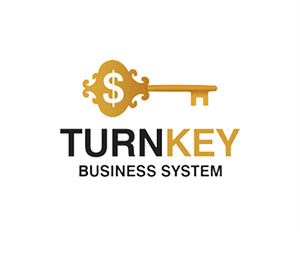U.S. Department of Labor Lifts Restrictions on Cryptocurrencies in Retirement Savings

U.S. Department of Labor Lifts Restrictions on Cryptocurrencies in Retirement Savings
On May 28, 2025, the U.S. Department of Labor (DOL) announced the reversal of its 2022 guidance that had discouraged the inclusion of cryptocurrencies in 401(k) retirement plans.
This decision marks a significant shift in policy, granting employers and plan administrators the autonomy to decide whether to offer digital assets as part of these retirement savings programs.
This decision marks a significant shift in policy, granting employers and plan administrators the autonomy to decide whether to offer digital assets as part of these retirement savings programs.

U.S. Department of Labor Lifts Restrictions on Cryptocurrencies in Retirement Savings
What Are 401(k) Plans?
A 401(k) is one of the most widely used retirement savings vehicles in the U.S. private pension system. Participants allocate a portion of their pre-tax income to these accounts, which are then managed by fiduciaries who invest the funds in various assets such as stocks, bonds, or mutual funds. As of the end of Q3 2024, the total assets held in 401(k) plans amounted to $8.9 trillion , underscoring their importance in securing Americans' financial futures.Until now, the inclusion of cryptocurrencies in 401(k) plans was rare and limited to niche solutions, often drawing criticism from regulators. The DOL's 2022 guidance had warned against cryptocurrency investments due to their high volatility and lack of transparency , citing concerns about protecting retirees' savings.
Why the Policy Reversal?
The decision to lift restrictions reflects a broader trend toward embracing innovation in financial markets. In her statement, U.S. Secretary of Labor Lori Chavez-DaRemer emphasized the need to reduce bureaucratic overreach:"We are rolling back this excessive intervention and making it clear that investment decisions should be made by trusted fiduciaries, not bureaucrats in Washington."
This move aligns with recent developments in the cryptocurrency space, including the approval of the first spot Bitcoin ETFs in 2024. These regulated instruments allow investors to gain exposure to Bitcoin through traditional financial markets, paving the way for their potential inclusion in retirement plans. Shares of these ETFs could technically be integrated into 401(k) portfolios, offering a more regulated and accessible route to crypto exposure.
Implications for Retirement Savers
The DOL's updated stance does not explicitly endorse or discourage the inclusion of cryptocurrencies in 401(k) plans. Instead, the responsibility now falls on plan fiduciaries —the individuals or entities tasked with managing retirement accounts—to determine whether such investments are appropriate for participants. Key considerations include:Volatility Risks: Cryptocurrencies remain highly volatile, posing risks to long-term retirement savings. Fiduciaries must weigh these risks against potential rewards.
Transparency and Regulation: While spot Bitcoin ETFs represent a regulated entry point into the crypto market, other digital assets may still lack sufficient oversight.
Diversification: Including cryptocurrencies could enhance portfolio diversification, but only if done prudently and in alignment with participants' risk tolerance.
Participant Education: Offering cryptocurrencies in retirement plans requires educating participants about their unique characteristics and risks.
Industry Reaction
The policy reversal has sparked mixed reactions:
Proponents argue that lifting restrictions empowers individuals to take control of their retirement savings and benefit from the growth potential of digital assets. They also highlight the increased regulatory clarity surrounding cryptocurrencies, particularly with the advent of spot Bitcoin ETFs.
Critics warn that the inherent volatility of cryptocurrencies could jeopardize retirees' financial security. Some fear that inexperienced investors might allocate too much of their savings to high-risk assets without fully understanding the consequences.
The Road Ahead
The DOL's decision reflects a hands-off approach, allowing market forces and fiduciary judgment to shape the future of cryptocurrencies in retirement planning.However, several questions remain:
Will employers and plan administrators embrace this opportunity, or will they remain cautious given the risks involved?
How will regulatory frameworks evolve to address emerging challenges in integrating digital assets into traditional financial systems?
Could this policy shift encourage other countries to reconsider their stance on cryptocurrencies in pension schemes?
For now, the U.S. has taken a bold step toward integrating cryptocurrencies into mainstream finance, potentially reshaping how Americans save for retirement.
Whether this move proves beneficial or detrimental will depend on how responsibly these new options are implemented and managed.
Whether this move proves beneficial or detrimental will depend on how responsibly these new options are implemented and managed.














Report
My comments